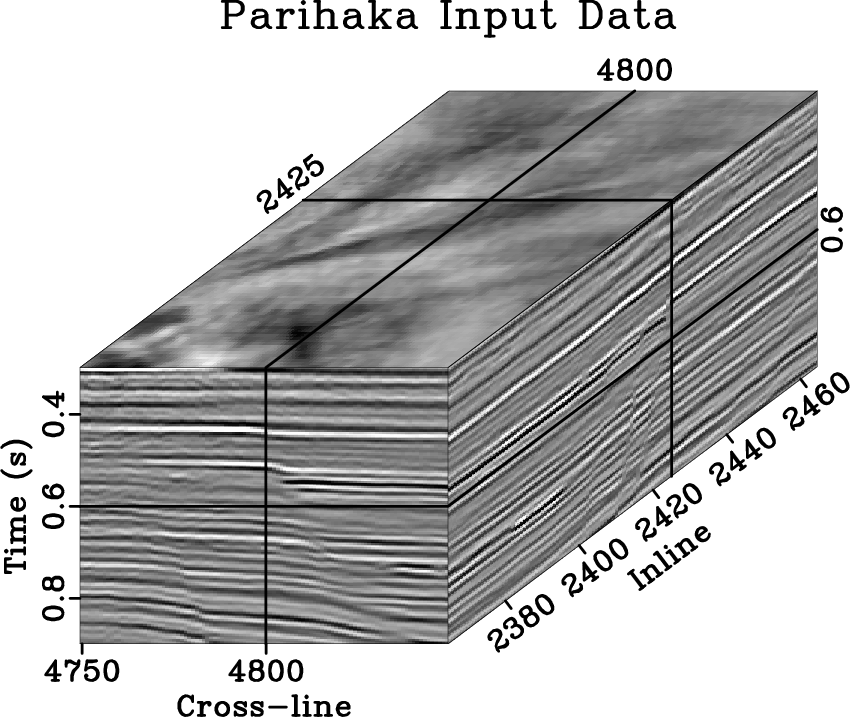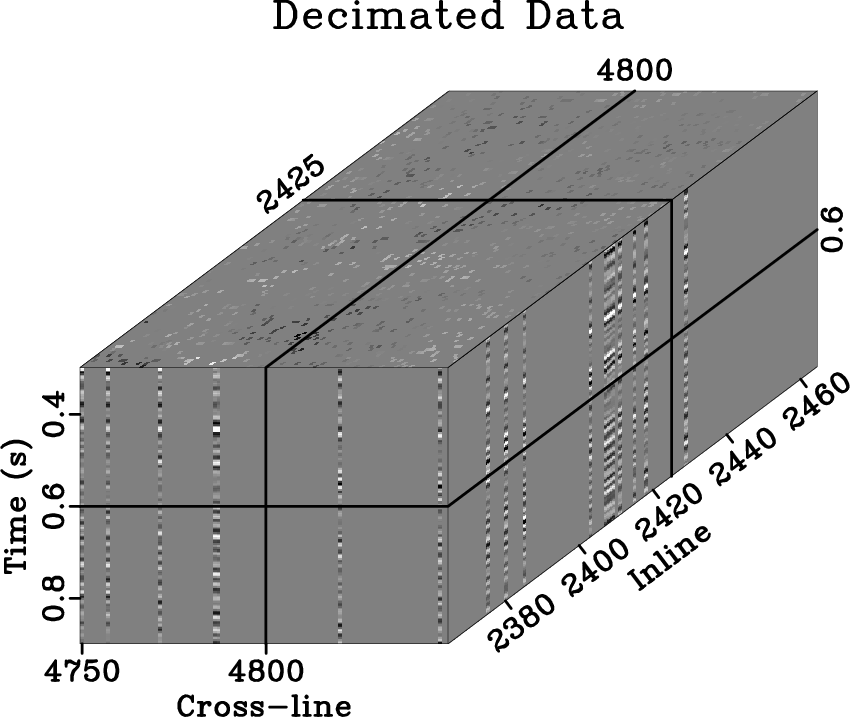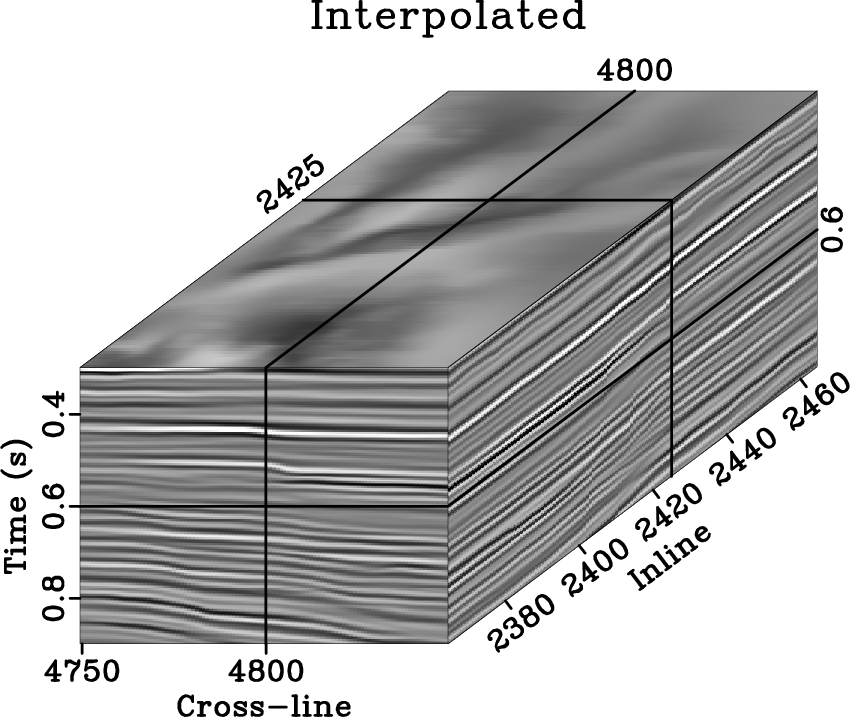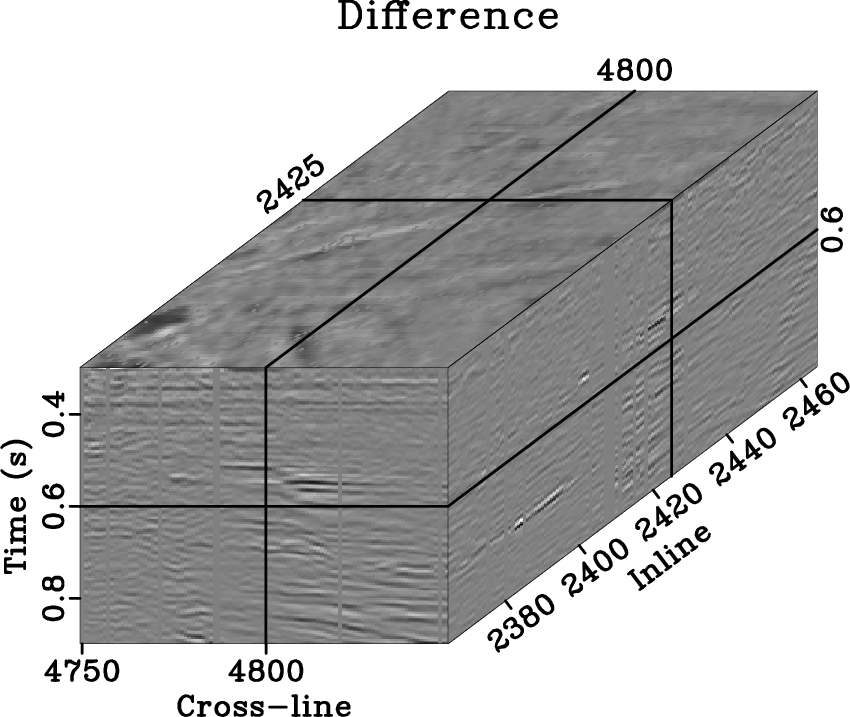|
|
|
|
Seismic data interpolation using plane-wave shaping regularization |




|
|---|
|
pari-3d,p3-deci2,p3-shfill2,p3-sherr2
Figure 7. Real data interpolation example. The original data is depicted in (a) and a mask is applied to heavily decimate the input to create a set of wells (b). (c) shows the interpolated result of PWS, and (d) is the difference between the reconstruction and the original. The smallest-scale features and noise are removed as a result of the smoothing. |
|
|
|
|
|
|
Seismic data interpolation using plane-wave shaping regularization |